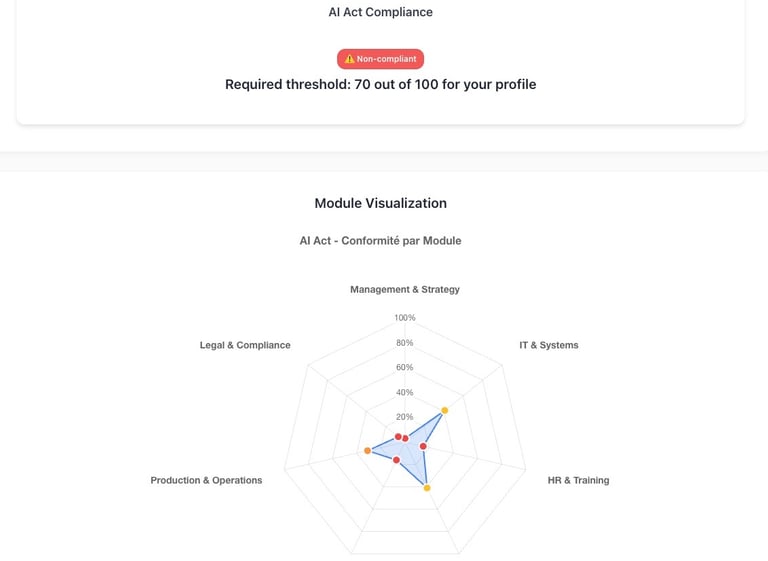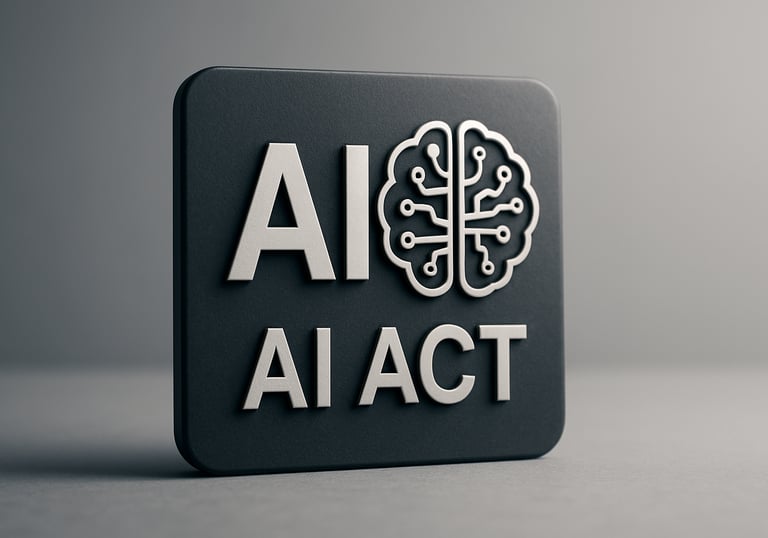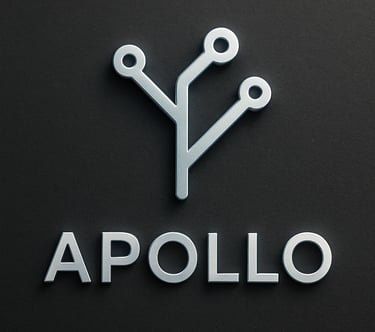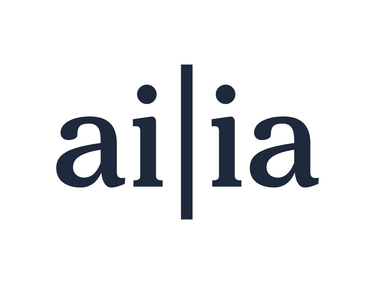Assess Your EU AI Act Compliance
APOLLO™ Diagnostic AI Act
Regulatory compliance diagnostic in 64 questions
Our assessment is the unique solution designed to precisely evaluate your compliance with the European AI Act regulation. It adapts to your sector, company size, and deployed AI systems.
Thanks to a methodology based on official European standards and the analysis of 7 business modules, it offers an exhaustive diagnosis and actionable recommendations for structured compliance.


Critical milestones 2025-2027
February 2025 - Prohibition of prohibited AI systems
- Obligation: Mandatory audit of existing systems
- Sanction: Up to €35M or 7% of global turnover
- Example: An SME using an automated HR scoring system without human supervision must cease immediately or risk maximum sanctions.
August 2025 - GPAI obligations (General Purpose AI)
- Obligation: Transparency documentation for generative AI
- Sanction: Up to €15M or 3% of global turnover
- Example: An SME deploying ChatGPT Enterprise must document usage, risks and mitigation measures under penalty of fine.
August 2026 - Full compliance for high-risk systems
- Obligation: Compliance assessment + mandatory certification
- Sanction: Market ban
- Example: An industrial company using predictive maintenance AI on critical infrastructures must obtain CE marking before operation.
August 2027 - Full application of all provisions
- Obligation: Continuous monitoring + annual audits
- Sanction: Market withdrawal + cumulative fines
- Impact: Permanent surveillance of all AI systems with mandatory reporting.
APOLLO Framework™ AI Act Methodology
Developed by consultants certified MIT Sloan Executive Program "Artificial Intelligence: Implications for Business Strategy".
Dual scoring: General 0-100 classification + Sector-specific compliance thresholds
7 business modules: Management, IT, HR, Sales, Procurement, Operations, Legal
Official EU standards: Calibrated on Regulation (EU) 2024/1689 and Commission guidelines
Personalized action plan: Prioritized recommendations with regulatory justifications
Sector Use Cases
🏭 Industry & Manufacturing
Use Case: High-risk (Annex III - critical infrastructure)
AI Act risk level: 42/100 - Non-compliant
Average SME compliance score: 42/100 - Non-compliant
Priority actions: Impact assessment + Technical documentation + Robustness testing
Concrete example: An industrial SME uses predictive AI on production lines. Assessment result: Score 38/100, "Non-compliant" status. Urgent actions: Conduct fundamental rights impact analysis (Article 27), document technical architecture, implement continuous performance monitoring.
🏦 Banking & Insurance
Use case: Fraud detection + alternative credit scoring
AI Act risk level: High-risk (Annex III - access to essential services)
Average SME compliance score: 56/100 - Partially compliant
Priority actions: Decision explainability + Human review rights + Treatment registry
Concrete example: A regional bank deploys alternative AI credit scoring. Assessment reveals: Score 53/100, critical gaps in explainability and human oversight. Recommendations: Implement LIME/SHAP explainability interface, guarantee 100% human review of rejections, document GDPR-compliant registry.
🛒 Retail & Distribution
Use case: Personalization + intelligent inventory management
AI Act risk level: Limited risk (transparency required)
Average SME compliance score: 68/100 - Acceptable
Priority actions: User information + AI cookie policy + Opt-out
Concrete example: An e-commerce platform uses AI product recommendations. Assessment: Score 65/100, "Acceptable" status but improvements needed. Actions: Add visible "AI-recommended" labels, implement personalization opt-out, audit bias across customer segments.
💊 Healthcare & Pharma
Use case: Assisted diagnostics + patient journey optimization
AI Act risk level: High-risk (Annex III - medical devices)
Average SME compliance score: 35/100 - Non-compliant
Priority actions: CE marking certification + Clinical validation + Decision traceability
Concrete example: A healthcare facility tests AI radiology diagnosis. Critical assessment: Score 32/100, operation forbidden without compliance. Urgent obligations: Obtain medical CE marking, conduct validated clinical trials, guarantee 100% decision traceability with physician override.
The Diagnostic in Action
Intuitive interface
Identify your profile: Sector (5 categories) + Company size
Map your AI systems: 7 business modules evaluated
Answer 63 questions: Duration 45-60 minutes
Risk classification: Automatic per AI Act Annex III
Instant results
Global score: 0-100 with compliance level (5 categories)
Module analysis: 7 detailed scores + compliance statuses
Action plan: Prioritized recommendations
Professional PDF report: 6 pages with glossary + regulatory authorities
Specialized FAQ
How much does non-compliance cost ?
Sanctions range from €15M to €35M or 3% to 7% of global turnover. For an SME with €50M turnover, this represents up to €3.5M maximum fine.
Who in my company should participate ?
Heads of each department concerned by AI: Management, IT, HR, Commercial, Legal, Production, Procurement. The tool guides the distribution of questions by business module.
What is the validity of my assessment ?
We recommend quarterly reassessment because: (1) The AI Act regulation evolves with new guidelines, (2) Your AI systems evolve, (3) Sectoral authorities publish clarifications. An assessment older than 6+ months may be obsolete.
Does this assessment replace a legal audit ?
No. This tool provides a structured diagnosis and actionable recommendations but does not constitute legal advice. For specific regulatory interpretation, consult a specialized AI law firm.
What to do if I am non-compliant ?
The report provides a prioritized action plan. We recommend starting with "urgent" actions, then structuring a compliance plan over 12-18 months.
What are your criteria based on ?
Our methodology integrates the official European Regulation, European Commission guidelines, CNIL and NIST standards, adjusted to sectoral specificities with specialized legal firm validation.
"The assessment revealed 3 unidentified high-risk AI systems. The detailed report with precise regulatory references enabled us to structure our compliance plan and convince the board of a €180k budget."
Laurent M., CIO, Automotive Industry
(350 employees)
★★★★★
"In 1 hour, we obtained comprehensive mapping of our AI Act compliance gaps. The prioritized recommendations with regulatory justifications are directly actionable. We shared the report with our legal firm who validated its relevance."
Sophie D., Compliance Director, Fintech
(120 employees)
★★★★★
Anticipate AI Act obligations 2025-2027
Companies structuring compliance today avoid tomorrow's penalties. First deadline: February 2025.


Secured confidential data, Professional PDF report included, Immediate results
Expertise
MIT Sloan AI | Academic certification | Practical applications | C-Level First approach
Contact
contact@aiia-tech.com
© 2025 aiia-tech.com | Framework APOLLO™ - Protected Methodology.


